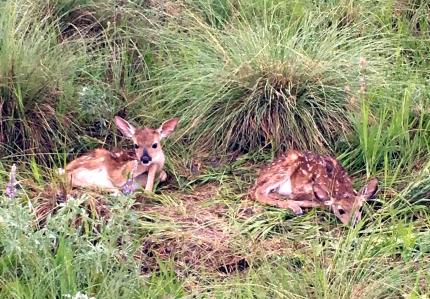
Most wild animals do not need to be "rescued" and there is almost never a time when you should remove a baby wild animal from its natural environment. This is true even if an animal appears to be abandoned. More often than not, the parent is nearby and leaving a young animal alone usually affords it the best chance for survival.
Every year, hundreds of young wild animals such as fawns, baby seals, and baby birds are needlessly "rescued" and referred to wildlife rehabilitators. This can be harmful or fatal to the young animal, and disruptive to wildlife rehabilitators who need to concentrate limited resources on truly orphaned or injured wildlife.
Found injured wildlife? Find a wildlife rehabilitator near you.
When you should intervene
The only time you should even consider intervening in a wild animal’s life is if it is clearly sick or injured – or if you are certain the parent is dead. In those cases, always consult with a licensed wildlife rehabilitator before moving an animal to avoid unnecessary handling.
Signs of serious distress include bleeding, vomiting, panting, shivering, lethargy, obviously ruffled feathers or fur, or evidence of an attack by a cat, dog, or other predator.
Why most babies don’t need rescuing
Young animals are often left alone for hours while their parents gather food. It is normal for a deer fawn to be left alone hiding in a bed and for young birds to leave the nest before they are fully ready to fly. Birds are often fed on the ground for several days by the parents until they are able to fly. Anyone tempted to remove an animal from its natural environment should carefully observe it to determine if it is truly orphaned or injured and needs help.